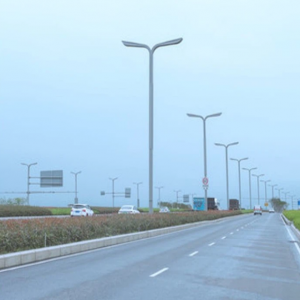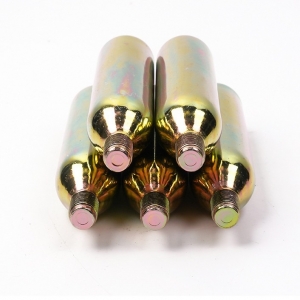How to Use Color Glass & Glass glass chips in DECORATIVE CONCRETE
How to Use Color Glass & Glass glass chips in DECORATIVE CONCRETE
Irregular Color Glass Beads For Swimming pools, kitchen counter-tops, Terrazzo, Landscaping,
Color glass bead /Glass Grit/Cullet/Fire glass is a new kind of material for deluxe decoration. This Kind of beads are made of glass powder in different colors. It is used in the kitchen counter-tops, Terrazzo, Landscaping, aquariums, fire pits, exterior walls decoration, courtyards, footpaths and swimming pools.It will be dazzling and resplendent when the sunlight or lamplight is shining on it. We have more than 30 kinds of colors.
Fire Glass Color Glass For Firepit, Fire places
Fire glass is a beautiful and a functional addition to any gas fireplace or fire pit. It comes in a variety of colors and sizes, and can really enhance the look of your outdoor living space. Many fire glass, landscape and terrazzo glass retailers offer a wide selection of colors and sizes, and can often provide expert advice on how to choose the right fire glass for your specific needs.
Variations in the use of Gochine Glass glass chips in decorative concrete are limited only by a user’s imagination. How the glass is applied, the quantities of glass used, and the mixes of colors chosen can provide a unique and signatured decorative concrete product for those up to the challenge.
The most common applications of glass in decorative concrete are (1) seeding and (2) mixing integrally. First, the seeding concept:
Seeding glass means sprinkling, broadcasting, or spreading glass onto the surface of a concrete floor, slab, or other surface. The advantage of seeding glass is that the quantity of glass used is reduced relative to other methods. Also, you can continue to use a traditional 6-bag or other traditional concrete mix that you’re used to and simply add the glass as a decorative accent to your project surface. The disadvantage to seeding is that it’s tricky to uniformly spread the glass on your concrete surface.
The steps involved in seeding glass are fairly straightforward:
Prepare and place your concrete as you normally do.
Bull float the concrete to smooth out the surface, but don’t rough trowel or finish trowel your project.
Spread the glass out evenly on your concrete surface using whatever quantity, colors, and mixes of glass that you desire.
Lightly trowel the glass into the concrete gently pushing the glass into the
still wet concrete mixture. Take care not to push the glass too far in or
your finishing, grinding, and polishing process will take longer. Leave Pea gravel, compacted substrate some of the higher glass tips on the surface or even sticking out of the
concrete.
Allow the concrete to cure for approximately seven days, depending on atmospheric conditions. Attempting to finish the surface too early will damage the surface. Finishing the surface too late will take much longer and will put undue wear on your finishing tools. Note: From here, finishing methodologies differ by desired outcome of the project. Exposed aggregate, sandblasting, and other finishes are possibilities. We most frequently get questions about grinding, polishing, and sealing, so we’ll proceed assuming that that finish is your desired result.
Begin grinding the concrete surface with a 50 grit diamond grinding pad or similar taking care to wet the surface during the entire grinding process. Wetting the surface reduces the friction between the pad and the concrete reducing scratching and scarring of the concrete. (The glass grinds uniformly with or without wetting.) Increase to a 100 grit, then 200 grit, and continue doubling the grit until you achieve the finish and polish you desire.
Sweep, vacuum, and/or wash the surface (often with muriatic acid) to remove the finishing dust from the grinding and polishing process. Install the sealer of your choice carefully following the manufacturer’s recommendation be it a shiny UV-resistant or a flat penetrating sealer.
TIP 1 – Before step 3, some people use a retarding product on the surface to increase the working time. We haven’t had experience with this step, so we highlight it simply as a consideration.
TIP 2 – Use of an acrylic fortifier to the concrete mix helps with the adhesion of the concrete to the glass and other aggregates. Acrylic fortifiers can be found at any concrete supply place (including aisle 1 at Home Depot) and looks like a heavy milk or a liquid Elmer’s glue. Not required, but helpful.
The second most common application is integral mixing. Integral mixing means replacing all or a portion of the aggregate in a concrete mixture with recycled glass chips. If you have your own proprietary mixture, simply subtract your original aggregate (pea gravel) amounts by weight by the amount of glass added to your mixture. The advantage of mixing integrally is that the glass aggregate mixes uniformly in the batch of concrete and is obviously uniformly segregated in the finished concrete product. The disadvantage is that much more glass is needed in a batch of concrete relative to seeding/broadcasting.
Replace traditional aggregate content with Gochine Glass recycled glass chips on a one-for-one basis by weight. That is, if a traditional 6-bag mix requires 100 lbs of aggregate per batch, replace all or a portion of the 100 lbs with glass. Mixing aggregate and glass 50/50 or any other percentage is fine. More glass provides a more colorful finish, less glass a more subtle color.
Mix, pour, bull-float, rough trowel, and finish trowel the concrete.
Follow steps 5, 6, and 7 above by allowing the concrete to cure, grinding and polishing it to the finish you desire, then sealing it with a good sealing product.TIP 1 – We always recommend adding our fine glass (ground glass minus 30 mesh) to your mixture when glass aggregates are used. The silica in the fine glass chemically reacts well with the cement to better bond the concrete mixture to the glass. An acrylic fortifier helps as well, but the fine glass is highly recommended in this case.TIP 2 – We’ve used in the past a mixture as follows and have had reasonable success in limited applications:
Portland cement ………………………….. 25% by weight (plus a little more)
Glass fines ………………………………….. 25% by weight
Glass chips (sizes #00 and #0) ……….. 25% by weight
Glass chips (sizes #1, 2, and #3) …….. 25% by weight
Acrylic fortifier…………………………….. Per manufacturer’s recommend
TIP 3 – We don’t recommend using our glass as a coloring agent. There are numerous companies that make concrete coloring products that will serve you much better than our products. Our fine glass is lighter in color and provides only a subtle color change rather than the deeper color change most customers seek. Our glass is great for subtle effects, not so great for deep effects.
Irregular Color Glass Beads For Swimming pools, kitchen counter-tops, Terrazzo, Landscaping,
Color glass bead /Glass Grit/Cullet/Fire glass is a new kind of material for deluxe decoration. This Kind of beads are made of glass powder in different colors. It is used in the kitchen counter-tops, Terrazzo, Landscaping, aquariums, fire pits, exterior walls decoration, courtyards, footpaths and swimming pools.It will be dazzling and resplendent when the sunlight or lamplight is shining on it. We have more than 30 kinds of colors.
Fire Glass Color Glass For Firepit, Fire places
Fire glass is a beautiful and a functional addition to any gas fireplace or fire pit. It comes in a variety of colors and sizes, and can really enhance the look of your outdoor living space. Many fire glass, landscape and terrazzo glass retailers offer a wide selection of colors and sizes, and can often provide expert advice on how to choose the right fire glass for your specific needs.
 Illuminate the Future with Goc
Illuminate the Future with Goc
 Prefilled CO2 Cylinders, Pref
Prefilled CO2 Cylinders, Pref
 AASHTO M247 Type 1, 2, 3, 4, 5
AASHTO M247 Type 1, 2, 3, 4, 5
 Gochine Roadway Safety Product
Gochine Roadway Safety Product
